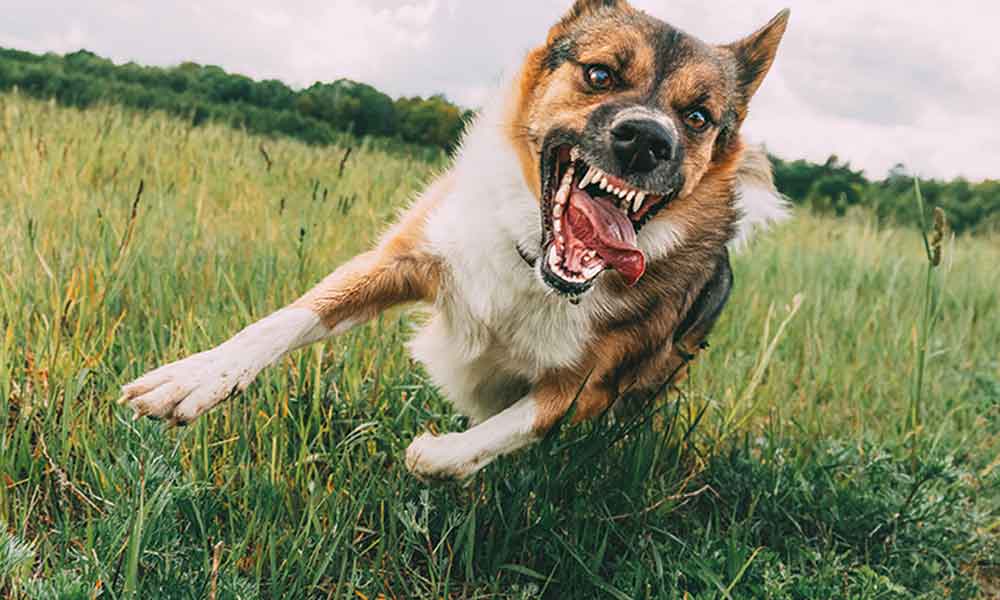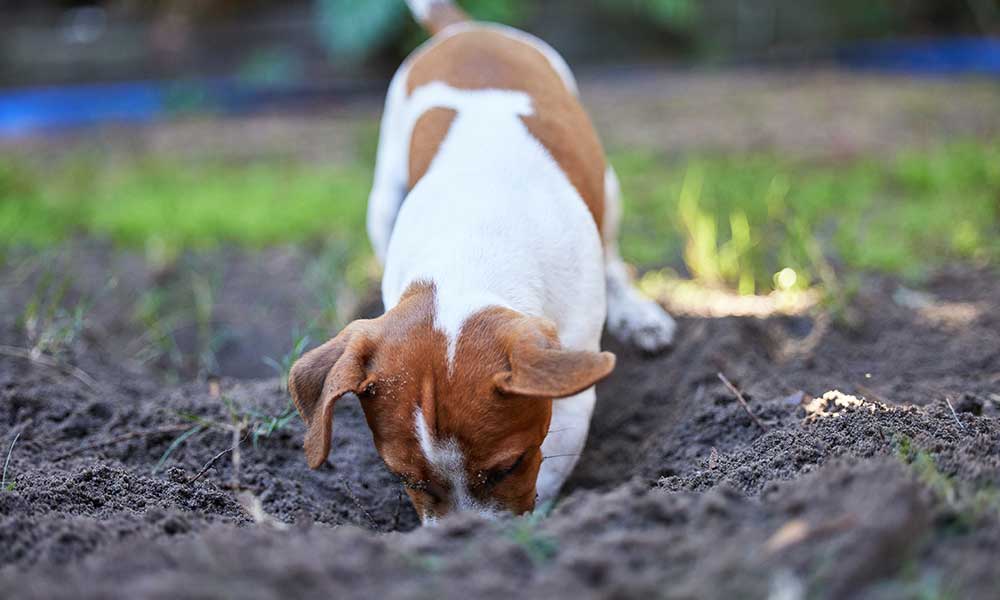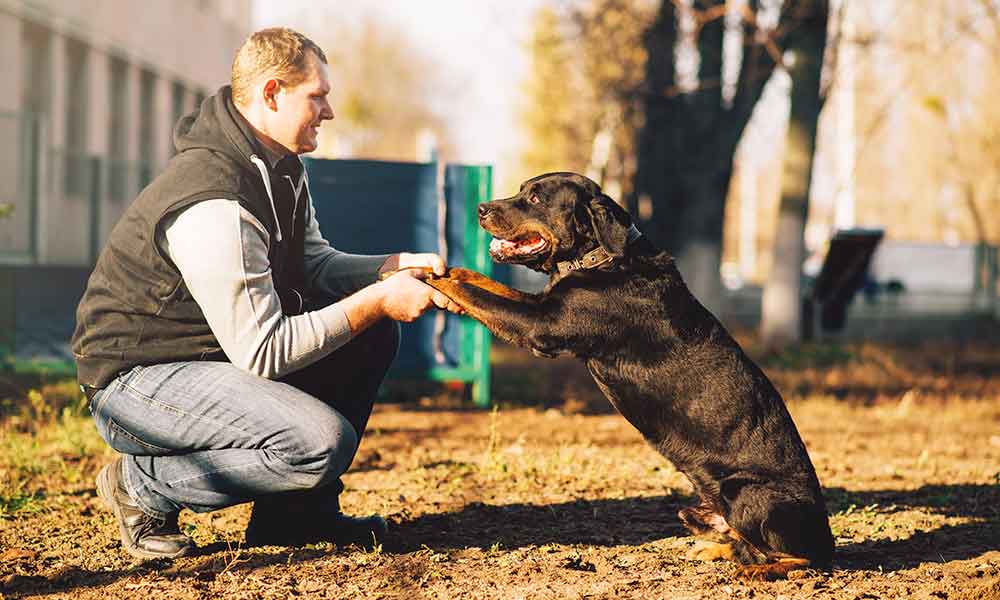Introduction
As any dog owner can tell you, it takes dedication and effort to ensure that your pup is living their best life. Dogs are wonderful companions, but they can sometimes exhibit undesired behaviors that can take a toll on the relationship between the canine and their human.
It’s important to understand that bad behavior from dogs is not indicative of a mischievous nature or lack of intelligence. Rather, it’s an indication that something has gone wrong in their training or environment. Fortunately for you and your pup, there are ways to address common canine behavioral issues in order to create a better and more harmonious life for both of you.
This guide will discuss the different types of commonly seen bad behavior amongst dogs and how you can work on improving it. With some patience, dedication, and understanding, this guide will show you just how easy it is to create a happier pet and owner relationship.

Common Dog Behavior Issues Overview
For many pet owners, understanding and correcting irritating dog behavior is a major challenge. Common dog behavior issues can range from excessive barking, to destructive chewing, to jumping up on visitors. They can cause frustration and embarrassment, and ultimately leave both pet owner and dog feeling overwhelmed and unhappy.
The good news is that most pet behavior problems are preventable or correctable with the right know-how, proactive approaches, and patient consistency. Dog behavioral training can help your pet understand acceptable behaviors while providing much-needed structure and leadership from an authoritative figure—you!
To help you get started in the right direction and ensure a happier pooch (and you), let’s review some of the most common dog behavior issues:
- Excessive Barking
- Separation Anxiety
- Chewing
- Jumping up on People
- Digging
- Play Biting & Mouthing
How to Address Chewing & Digging
Chewing and digging are common traits among canines, but it’s important to understand why dogs might engage in these behaviors. One of the main explanations for chewing is that dogs need to keep their jaws strong and teeth healthy, so they’ll instinctively look for things to chew on. Similarly, if owners provide plenty of chew toys and inedible bones, that can be a great way to satisfy their natural urge to chew and help stop them from eating inappropriate objects.
On the other hand, dogs may dig to keep cool in hot or windy weather; they might dig in search of small animals, bones or other items that have a pleasant smell; or they may do it because they’re bored or frustrated. To tackle this issue head-on, owners should provide mental stimulation and activities for their pet as well as enough physical exercise; lack of these can lead a dog to become overly excited and stressed.

Prevent Aggressive & Fearful Behavior
When dealing with aggressive or fearful behavior in dogs, it is important to identify and address the underlying issues. Behavior modification, under the guidance of a qualified professional, is the safest and most effective way to treat aggression in pets. Additionally, creating a safe space for the dog can help reduce fear aggression by allowing them to feel secure.
Regular obedience training may also help reduce fear and anxiety, mitigating more aggressive responses. Positive reinforcement and rewards have been shown to have great success when it comes to improving dog behavior. Positive reinforcement techniques involve using treats or verbal approval when a desirable behavior occurs. It’s important not to rely on punishment as this can cause an increase in aggression or fear-related behaviors.
Finally, understanding why your pet behaves as they do is key to providing an effective solution. Paying attention to small cues such as stress signals—panting, drooling or avoidance behaviors—can alert you to possible triggers that can lead to aggressive behavior. Taking the time to identify these triggers and providing positive experiences with them can make a world of difference when it comes to long-term results in modifying bad habits.
Solutions for Housebreaking Troubles
Housebreaking can be one of the most challenging tasks for a new pet owner, but there are effective steps that can be taken to create a successful training experience. One solution is to focus on positive reinforcement, and reward your dog heavily when they go in the correct spot. Doing so will help them learn that they are being praised when they go outside and eliminate correctly.
Additionally, avoid punishing your dog after the fact if they have an accident inside – this may only create confusion and cause your pet to associate pottying with a negative experience. Instead, focus on rewards when they demonstrate appropriate behavior and provide encouragement when they show signs of progress.
Finally, if you need more control over his elimination habits, consider using a doggie door to force him outside. This will make it easier for you to keep track of his potty breaks and reward him appropriately. An added benefit is that it gives your pet added freedom within their home!

Setting Boundaries With Jumping & Barking
When your dog jumps up, or continuously barks for no apparent reason it is important to remember that this behavior is not out of spite or malice, but rather a lack of understanding of the boundaries you have set as an owner. One of the most important aspects of training an unruly pup is to set clear boundaries and expect obedience.
It can be difficult to remain consistent when dealing with misbehaving dogs, but doing so will make all the difference in the long run. Here are some simple tips for setting boundaries with jumping and barking:
- Establish a Command – Set a clear command like “Down” or “No” and stick to it every time your dog jumps or barks at inopportune moments.
- Remain Calm – Dogs pick up on their owners’ emotions and attitudes, so remain calm even when they may not be behaving as expected. It is also important to not give treats or any kind of reward for misbehaving as this may make the situation worse.
- Reward Good Behavior – When your dog does listen and follows instructions, reward them immediately with verbal praise and/or a treat. Every situation should be approached differently, but always take into account what your pup likes best as a reward!
By giving clear commands with consistent action and rewarding good behavior, you will soon see changes in your dog’s behavior – ensuring everyone can enjoy a much happier home life together!

The Benefits of Dog Training Classes
Dog training classes can be immensely beneficial for both pets and pet owners alike. Training can help strengthen the bond between you and your dog, make your home safer by increasing the dog’s obedience to commands, and help boost the dog’s confidence by instilling good behavior.
More specifically, when undergoing a professional training class, dogs can:
- Learn how to recognize danger and become more alert
- Become familiar with basic obedience skills like sit, stay, and come when called
- Develop better problem-solving skills
- Build impulse control that allows them to more easily ignore distractions
- Respond better to rewards-based training
- Increase overall attentiveness to their owners
- Develop a more positive attitude in new environments
- Learn socialization skills needed for successful interactions with other animals and people
Dog training classes offer an excellent opportunity for building a strong relationship with your pup while instilling good behavior that will benefit both of you in the long run!
Conclusion
In conclusion, understanding and addressing bad behavior in dogs can be a challenge. However, by providing a safe and secure environment, positive training techniques, and plenty of exercise and play, owners can guide their canine companions towards better behavior. It is essential to remember that dogs need structure, boundaries and consistency in order to learn the right behavior and develop strong relationships with those around them. With the right guidance, owners can build a bond with their furry friends and help them to grow into well-behaved, happy dogs.































